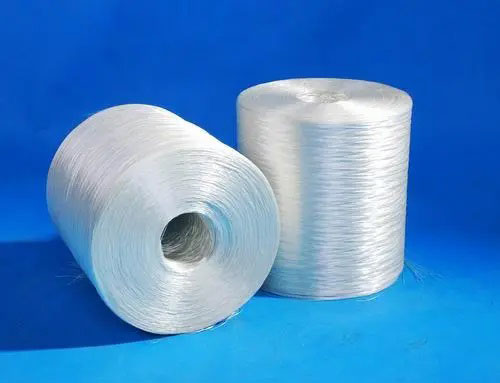Checkered fabric is non - twist roving plain fabric, is an important base material for hand - paste FRP. The strength of the gingham is mainly in the warp and weft direction of the fabric. For the occasions requiring high warp or weft strength, it can also be woven into one-way gingham, which can be arranged in the warp or weft more twisting roving.

The quality requirements of gingerbread are as follows: ①The fabric is uniform, the edge is straight, the surface is flat and matted, and there is no stain, fuzz, crease or wrinkle; ② Warp and weft density, area weight, cloth width and roll length meet the standard; ③ Winding on the firm paper core, winding neatly; ④ Rapid and good resin permeability; ⑤ The dry and wet mechanical strength of the laminates made of fabric should meet the requirements.
The characteristics of the composite coated with plaid cloth are low interlaminar shear strength and poor compressive and fatigue strength.
Fiberglass felt sheet
(1) Cut yarn felt: cut the glass yarn (sometimes also with no twist roving) into 50mm long, spread it randomly but evenly on the mesh belt, then apply emulsion binder or sprinkle powder binder, heat curing and bond into cut yarn felt. Cut felt is mainly used in hand paste, continuous plate making and die pressing and SMC process. The quality requirements of cut yarn felt are as follows: ① the area quality is uniform along the width direction; ②The cut filament was evenly distributed on the felt surface, no large holes were formed, and the binder was evenly distributed. ③ moderate dry felt strength; ④ Excellent resin infiltration and penetration.
(2) Continuous raw felt: the glass raw silk formed in the process of drawing or the continuous raw silk extracted from the raw silk tube is spread on the continuous moving mesh belt in figure 8, and the powder binder is glued together. The fiber of continuous fiberglass fibril mat is continuous, so its reinforcement effect on composite material is better than that of cut fiberglass mat. Mainly used in the process of pultruding, RTM, pressure bag and glass felt reinforced thermal plastics (GMT).
(3) Surface felt: FRP products usually need to form a rich resin layer, which is usually achieved with medium alkali glass surface felt. Because this kind of felt is made of medium alkali glass (C), it gives FRP chemical resistance, especially acid resistance. At the same time, because the felt is thin and the glass fiber diameter is small, it can also absorb more resin to form a resin rich layer, which covers the grain of glass fiber reinforced materials (such as plaid cloth), and play the role of surface modification.
(4) Needled felt: needled felt or divided into short fiber needled felt and continuous raw silk needled felt. Staple fiber needled felt is made by cutting glass fiber roving into 50mm pieces and randomly laying them on the substrate pre-placed on the conveyor belt. Then needles with barbs are used to needle the staple fibers into the substrate, while crochet hooks some fibers up to form a three-dimensional structure. The base material can be glass fiber or other fiber thin fabric, this kind of needle felt has a fuzzy feeling. Its main uses include heat insulation material, heat lining material, filter material, and can also be used in the production of FRP, but the strength of FRP is low, the scope of use is limited. The other kind of continuous primary filament needled felt is the three-dimensional structure of felt in which continuous glass primary filament is randomly thrown on continuous mesh belt by wire throwing device and needled by needle plate. This kind of felt is mainly used in the production of glass fiber reinforced thermoplastic stampable sheets.
(5) stitched felt: cut glass fiber from 50mm or even 60cm long can be stitched into cut fiber or long fiber felt by sewing machine. The former can replace the traditional binder bonded cut felt in several uses, and the latter can replace continuous raw fiber felt to a certain extent. Their common advantages are no binder, avoid the pollution of the production process, at the same time, good penetration, binding performance, low price.
Post time: Mar-08-2023

